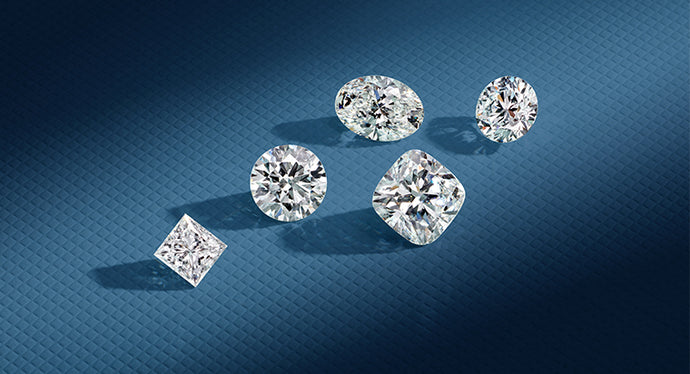With regards to buying lab grown diamonds, understanding the affirmation cycle is significant for settling on an educated decision. Two of the most perceived gemological laboratories in the business are the Global Gemological Foundation (IGI) and the Gemological Establishment of America (GIA). The two foundations give reviewing reports that assess the nature of diamonds in view of the 4Cs: Carat, Cut, Variety, and Lucidity. This article will think about igi vs gia lab grown confirmations, assisting you with settling on an informed choice while choosing your lab grown precious stone.
What Are Jewel Confirmations?
A jewel certificate is a report given by a gemological laboratory that evaluates and grades a precious stone’s qualities. This report fills in as a solid reference for purchasers, guaranteeing they comprehend the quality and worth of the jewel they are buying. Affirmation is particularly significant for lab grown diamonds, as it confirms their legitimacy and gives straightforwardness in the commercial center.
1. Outline of IGI and GIA
Global Gemological Establishment (IGI)
Established: 1975
Area: Settled in Antwerp, Belgium, with laboratories all over the planet.
Center: IGI is known for its attention on both normal and lab grown diamonds, giving far reaching evaluating reports that are broadly acknowledged by retailers and customers the same.
Gemological Foundation of America (GIA)
Established: 1931
Area: Situated in Carlsbad, California, with a worldwide organization of laboratories.
Center: GIA is one of the most regarded and legitimate gemological organizations on the planet, prestigious for its thorough evaluating guidelines and instructive projects.
2. Reviewing Guidelines and Models
Both IGI and GIA use the 4Cs to grade diamonds, yet there are contrasts in their reviewing models and procedures:
Cut
IGI: Spotlights on a few elements, including the precious stone’s extents, balance, and clean. IGI utilizes a more extensive scope of cut grades, including “Fair” and “Great.”
GIA: Known for its severe cut reviewing framework, GIA assesses diamonds in view of their capacity to mirror light, underlining brightness and fire. GIA utilizes a more smoothed out reviewing scale, ordering cuts as “Brilliant,” “Excellent,” “Great,” “Fair,” and “Poor.”
Variety
IGI: Follows a comparable variety reviewing scale to GIA, evaluating the presence of variety in diamonds on a scale from D (vapid) to Z (light yellow).
GIA: Likewise utilizes the D Z scale for variety reviewing, with a solid accentuation on guaranteeing consistency and precision in assessments.
Clearness
IGI: Gives itemized clearness reviewing, with an emphasis on recognizing and ordering incorporations and imperfections. It offers a careful portrayal of the clearness qualities present in the precious stone.
GIA: GIA’s lucidity reviewing framework is profoundly respected for its accuracy and consistency. It assesses the jewel for any considerations or flaws and sorts them in light of their perceivability and effect on the precious stone’s general appearance.
Carat Weight
Both IGI and GIA give exact estimations to carat weight, demonstrating the jewel’s size.
3. Report Organizations and Data
The organization and subtleties remembered for the reviewing reports from IGI and GIA can vary fundamentally:
IGI Reports
Design: IGI reports frequently incorporate nitty gritty outlines of the precious stone, featuring its particular attributes.
Extra Data: IGI reports may likewise contain a part committed to the jewel’s origin, which is important for those worried about moral obtaining.
GIA Reports
Design: GIA reports are known for their impressive skill and clearness, giving a far reaching outline of the jewel’s credits.
Extra Data: GIA reports incorporate a normalized reviewing scale and a special distinguishing proof number for detectability.
4. Notoriety and Acknowledgment
IGI
IGI has earned respect for its reviewing guidelines and is acknowledged by numerous retailers around the world. In any case, a few goldsmiths and shoppers might see IGI confirmations as somewhat less thorough contrasted with GIA, particularly in top of the line markets.
GIA
GIA is broadly viewed as the highest quality level in jewel reviewing. Its reports are much of the time liked in the extravagance market, and many top of the line retailers use GIA evaluated diamonds to guarantee client certainty.
5. Customer Trust and Straightforwardness
Both IGI and GIA underline straightforwardness in their evaluating processes. Notwithstanding, GIA’s well established standing for greatness frequently brings about more prominent purchaser trust, especially among those buying high worth diamonds.
6. Conclusion: Pursuing the Best Decision
While settling on IGI and GIA for your lab grown jewel affirmation, think about the accompanying elements:
Reason: On the off chance that you are looking for a precious stone for a high worth buy or speculation, a GIA ensured jewel might give more noteworthy confirmation because of its eminent standing.
Financial plan: IGI confirmed diamonds are in many cases more reasonable, offering great benefit while as yet guaranteeing quality.
Individual Inclination: At last, the decision might boil down to individual inclination and the particular elements you esteem most in your jewel.
Both IGI and GIA certificates give significant data about lab grown diamonds. By understanding the distinctions between these two establishments, you can settle on an educated choice that lines up with your qualities and assumptions.





